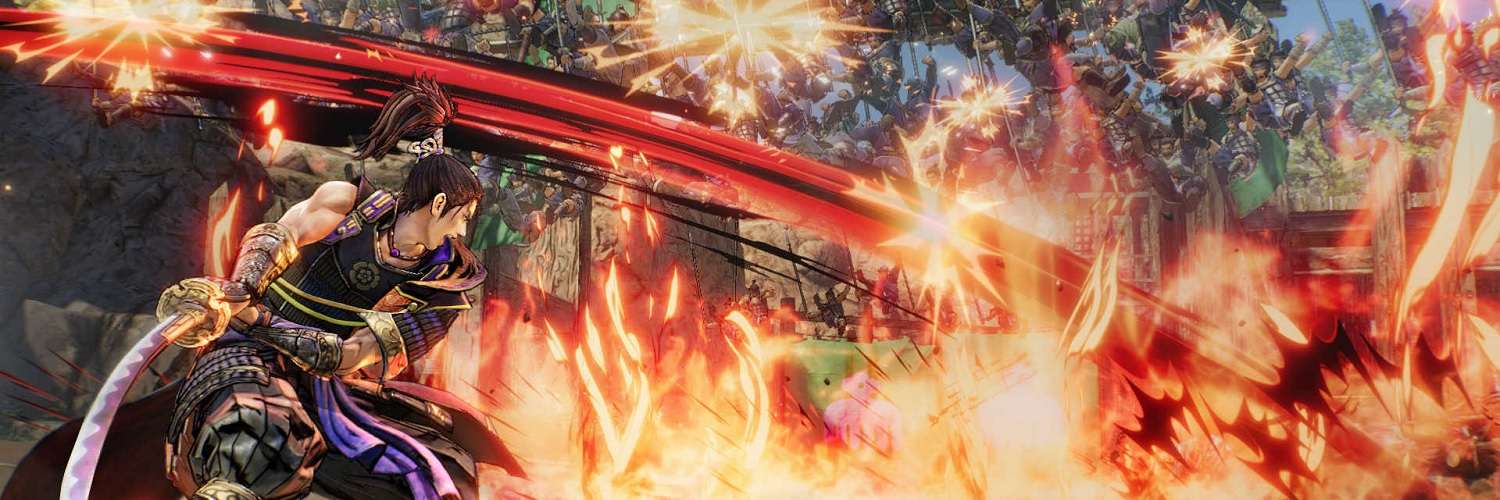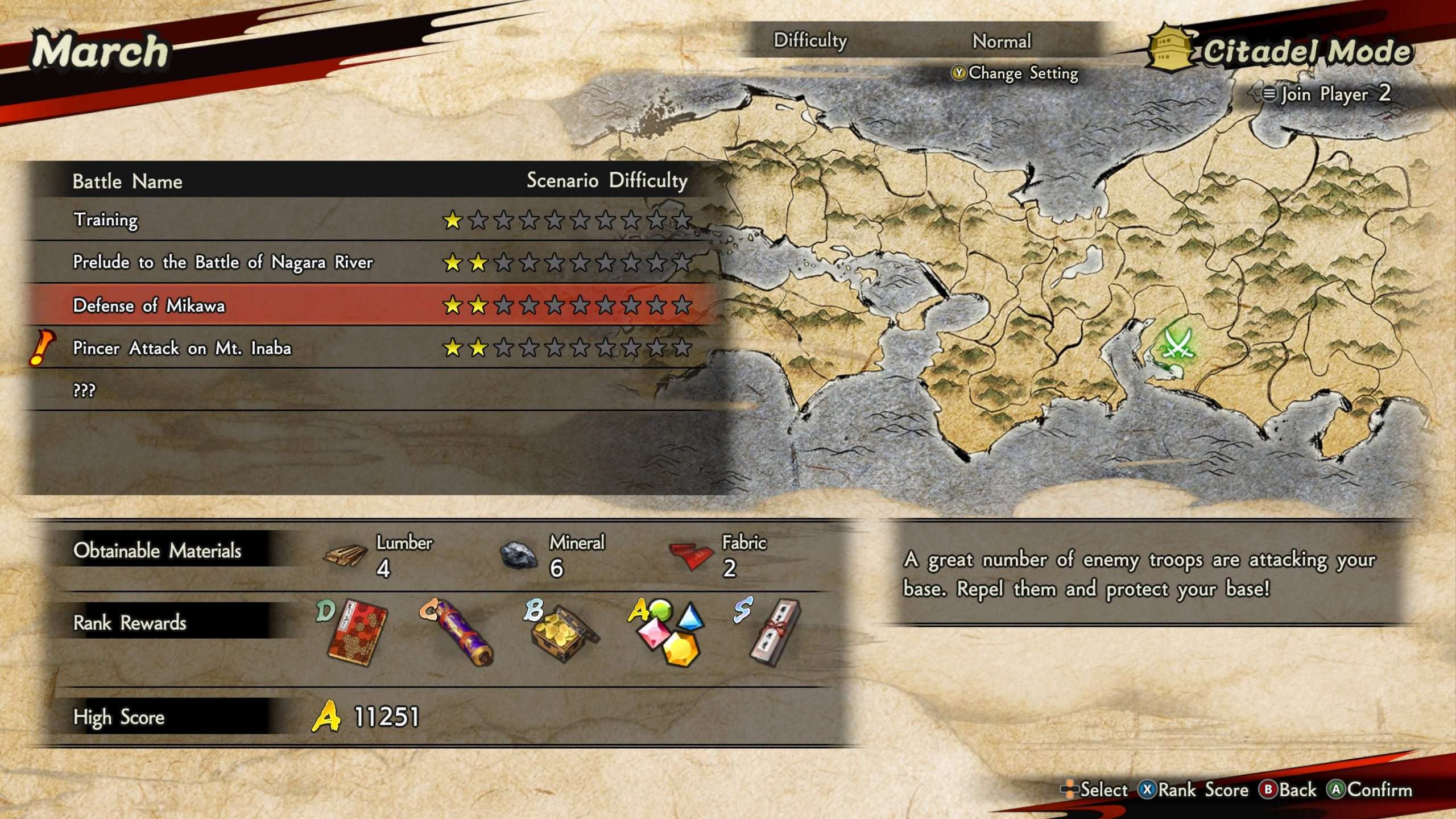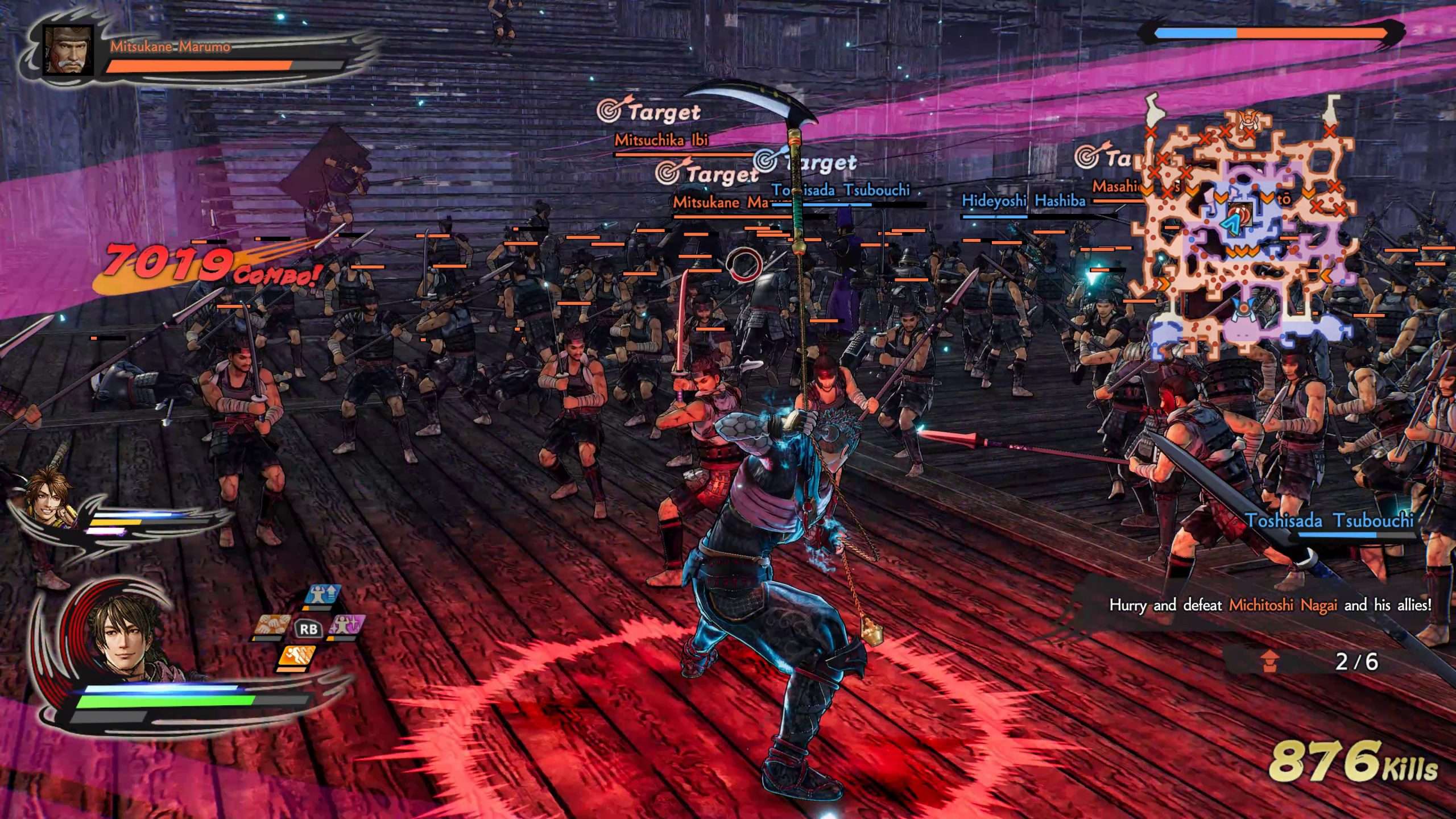
Samurai Warriors 5 PC Review
The team at Omega Force are machines when it comes to their impressive flow of Warriors game releases over the years. There are so many intellectual properties that have had their licences utilized within the Warriors framework that it has probably touched a game or anime show that you enjoy. I firmly believe, though, that even after six years on from the release of Samurai Warriors 4, that title is still one of, if not the best, Warriors game that Omega Force has produced. The studio took the series forward by recalculating its understanding of the franchise and adapting it to be better at what it does best – supplying none stop frantic action with improved mechanics to the core gameplay and plenty of content to explore. The next mainline entry of the Japanese-themed hack and slash game is here, taking a refreshing approach, as it was announced that Samurai Warriors 5 is a sort of re-imagining, so what does this mean?
For starters, the story has turned back time, becoming more focused on the early life of Nobunaga Oda and his relationship with Mitsuhide Akechi that eventually sees Nobunaga become one of the most powerful warlords in Japan. The story eventually splits into two, giving Akechi’s view of the story events. The developers have featured more cutscenes between each battle, digging deeper into the story and revealing more of the characters and their relationships with each other. This leads to some repetitive story beats, since some of Akechi’s missions are on the same map as Nobunaga’s, but told from his angle. That said, there are some sections that are purely for Akechi, seeing what he gets up to when not around Nobunaga. It is a way to extend story content without entirely delivering a completely new campaign.

The story, which is told through the game’s Musou Mode, begins during the beginning of the Oda Clan strikes against the Saitou, stopping at the end of the Honnoji incident, missing out on the reigns of Tokugawa and Toyotomi that other titles push into. The story here reminds me a little of the character-focused Spirit of Sanada from a few years ago. The game even has the main characters with an older alternative costume towards the end of the story. What this means for the character list is that there are fewer featured in the game, 37 (27 full characters, 10 support characters that do not have unique power attacks) playable instead of the 50+ that were included in Samurai Warriors 4, which is a shame, but the cast here is more fleshed out than ever before thanks to the more in-depth story presentation. The characters included are the ones more relevant and involved in the actions of Nobunaga and Akechi, so while some big personalities are missing, you get new people, like Mitsuki (the daughter of Nobuyuki Oda) and the African warrior, Yasuke. I am not sure how true the events that happen in the game are to the history that it represents, but I was more invested this time around than any other Samurai Warriors before it.
A lot of unlocks are based within Musou Mode, so there is an initial grind to unlock characters. Getting to some of the fun weapons requires a good few hours to get through. Free Mode is also part of Musou Mode rather than its own thing, so picking a completed stage enables any characters to participate. On the topic of progression blocking, there are elements of Musou Mode that are blocked, rather important elements of My Castle, which require playing a separate mode to access them.

My Castle is a feature that allows people to upgrade weapons, characters, mounts, and purchase items, but initially, the ability to upgrade these elements of the castle, which enables better gear to buy/upgrade, is blocked due to no materials. This is where the second mode comes in, Citadel Mode, which intertwines with Musou Mode in a sense that while it is not required, there are mechanics blocked until players jump into Citadel Mode to unlock them. In Citadel Mode, the idea is to defend the base against oncoming enemies and finish side objectives to earn materials to upgrade the sections of My Castle, the faster the mission is completed the better the reward. The special enemies mentioned previously can be spawned by the player on the map to defend/block routes to the player’s base. This mode is not as fun as the Musou Mode, but for fans, they will want to do it to unlock all the upgrades and see the relationship cutscenes between characters that can only be done through maximising relationships through Citadel missions.
Koei Tecmo’s statement of reimagining the franchise feels more aimed towards the presentation and story design since some modes are missing from other games, such as Conquest, Ambition, or Tower, leaving just the two mentioned modes. The statement is also true for the action, as fans will be familiar with Samurai Warriors 5‘s combat and mission structure, as all of it returns from Samurai Warriors 4. Most missions are about hunting down the generals on the map, hitting key points in the battle to progress the main objective, and clearing out the enemy presence by converting the enemy’s cover of red and shifting it to blue to put the morale of battle to your favour. If you were never a fan of the madness of the Warriors series, then I do not think this game does anything that would lure you in.

Each mission in Musou Mode has primary and optional objectives. The latter need to be discovered by running around the battle map. Performing these actions will add more rewards at the end of the mission. Objectives are often simple tasks that will pop up on the screen when close by and could range from defeating key characters, using a specific character to defeat another character, clearing out all enemies from a zone, capture garrisons, or stopping enemy units from reaching a destination. This is certainly aimed at completionists to find and beat all the objectives, making the standard flow of a mission different, giving a reason for players to explore the stage map.
Literally thousands of units fill each battlefield. It seems to be the case that each new Warriors game manages to add in more people onto the battlefield. At one point I must have had scooped up over 200 units and managed to extend a combo to over 17,000 hits, which resulted in an end-of-mission KO count of over 3,000. Combos remain the fun element of fighting the rather dumb standard enemies. The combo system remains intact from the previous game, meaning that combos are often formed from a string of two attack buttons, normal attack and hyper attack. The latter returns from Samurai Warriors 4, which introduced hyper attacks as a way to cover a massive area while dealing damage to the cannon fodder units. It was a smart addition then and I still feel it is one of the best inclusions to the series. Hyper attacks do not work on generals unless you manage to knock them down first from a normal attack, as hyper attacks are automatically parried by the general.
Combos can be anything from simple sword slashes to unleashing explosive fire area of effect damage that looks cool, especially if you manage to perform it at the end of a long combo for that flashy finish. The combos are usually based on the character adding their own flavour to a standard weapon-type combo. For example, one character had flames coming out of a 5 hit combo string for a katana, while another character switched this for rapid sword stabs. It’s a small thing, but it gives each character their twist on the various weapons that each character can be equipped with, which a total of 15 weapon types exist to use. While this allows for people to use their favourite weapons with any character, each one has their specialised weapon type that will enable a unique attack when equipped.
On the topic of uniqueness, Ultimate Skills are a new feature here that gives a character four additional abilities that charge up over time, enabling them to be reused multiple times in a battle. These skills are based on the weapon equipped. More skills unlock for the said weapon as the player’s weapon skills upgrade, allowing more options to pick from later in the game. Ultimate Skills offer a range of buffs, such as increased speed, more damage, more musou, but also can be distinctive attacks as well, such as a fast dash or a shield breaking slash. These moves instantly cancel combos, but can also be used to reset and extend a combo string, making for some flamboyant combo showcases. Ultimate skills have been given an important element to combat as they are the best way to get past some for the new enemy types that are mainly featured to be taken down by these new skills. These foes can disrupt the flow of the game, which is probably their intention, but it can be frustrating when spear warriors keep knocking you down, or you just run past shield bearers because it wastes time trying to defeat them without using the correct Ultimate Skill or using a Musou special attack.

Both modes bring in a partner character to fight alongside your main selected hero. It follows the same integration as Samurai Warriors 4 where the AI will control the partner until a button is pressed to switch to them. This is great for finishing side objectives fast, as the AI can be told to follow specific friend or foe to keep them moving around the map. It also adds to the combat by allowing players to bring their two favourites into battle. Both modes also allow split-screen cooperative play and online play.
Historically some of the previous Warriors games have had rather bare-bones PC ports, even using older versions of the game rather than the current console version (PS3 port instead of PS4 for Dynasty Warriors 8: Xtreme Legends – Complete Edition for example). Samurai Warriors 5, while not pumped with graphical options, is probably the best way to play the game. It is capped at 60fps, but playing at 4K resolution does not require much grunt to do, so the frame rate remains steady. The high resolution makes the new Japanese ink art style look tremendous, really making it pop out. Just in general, the new look across in-game models and the menus is beautiful from an artistic viewpoint. On the audio side, the soundtrack is decent, not one of the better original soundtracks, but it’s pleasant to listen to while decimating many foes. The game suffers from many other Warriors games issues – it only features Japanese audio voiceovers. This becomes a problem as it is easy to miss what the characters are saying during battle, as the text sits at the bottom of the screen.

Omega Force’s new reimagining for the series does not change up much from a gameplay standpoint, but more to deliver a better story and pretty presentation. If you are after more character depth from some of these well-known warriors, then in those terms, this is the best Samurai Warriors game. If you are more on the side of content and features, it only ends up as a more visually striking game, but lacking modes and characters that the previous title, Samurai Warriors 4 had. Overall, Samurai Warriors 5 is another solid entry in the long-running series, but does not do much to bring in new players, as it still has that repetitive nature and simplistic mission design that the series has been known for. This is more for existing fans to have another game to confidently enjoy, but the cross over function with the game modes does make the initial hours a slow burn before it opens up all the good stuff.
